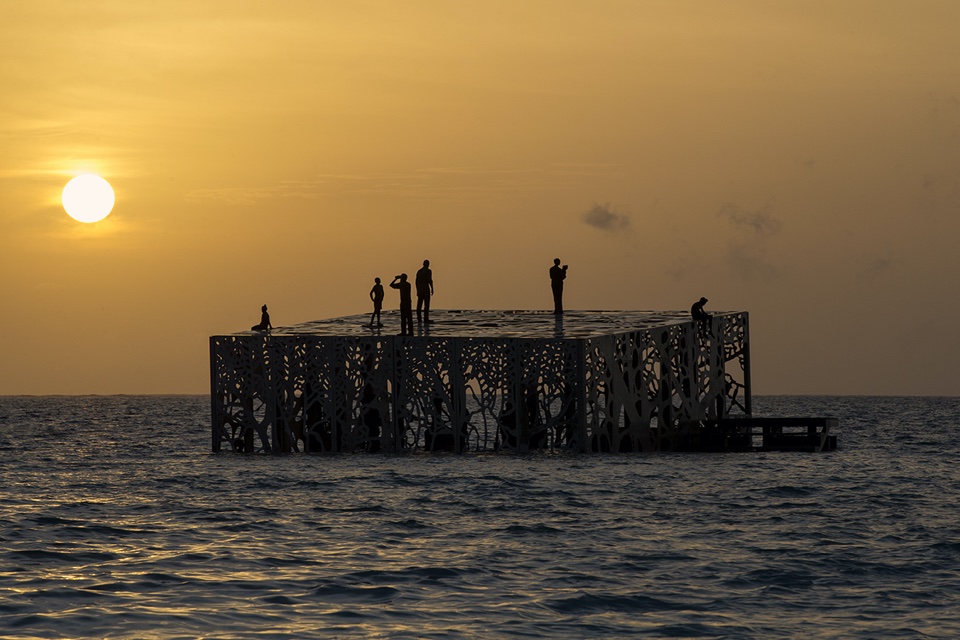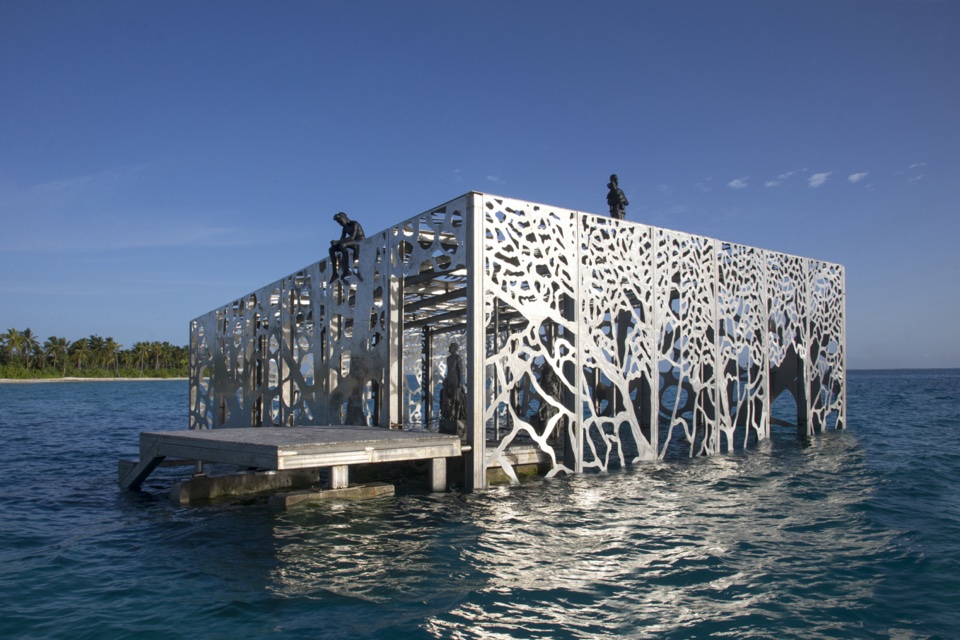Underwater Museum
Pdf downloadSculptor Jason deCaires Taylor, was born in 1974 and became the first of a new generation of artists to translate the concepts of the Land Art movement to the marine environment. Over the past 17 years he has created large-scale underwater museums with more than 1,200 works of living art. In 2006 he received international recognition for creating the world's first underwater sculpture park, located in front of the west coast of Grenada in the West Indies.
He focuses his works on environmental conservation, climate emergency and the regenerative attributes of nature. The works are mostly built with pH-neutral materials. Stainless steel is used as other environmentally friendly elements that stimulate the natural growth of marine fauna and therefore give the space a unique visual aesthetic.
Coralarium is located at a remote lagoon in the Shaviyani Atoll of the Sirru Fen Fushi island, the Maldivas. The stainless steel structure that makes up the work is six metres high and weighs more than 180 tonnes. At mid-tide, it rises about 3 metres above sea level, creating a contrast between the sheen of the stainless steel and the clear, shallow water from which it emerges.
For the metal cube, grade AISI 316 stainless steel with a bright finish was used. As it has no rugosity, it favours the surface material self-cleaning, promoting a better performance against corrosion and prolonging its useful life. The design of the walls is inspired by the shapes of the coral, leaving space among the openings that are created to allow the passage of currents, fish and facilitate the proliferation of fauna.
The access to the Coralarium can be either by boat or by swimming from the beach, as it is only 150 metres away. If we choose the second option, on our way we will find an underwater coral pavement covered with planted corals that guides us to the construction site. Once there, underwater stairs rise above the waterline to the top of the structure, allowing the visit of "the museum" both from the inside and from the surface.

